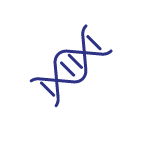In A Jirai-kei Populace
페이지 정보

본문
Intro.
Jirai Kei is an uncommon hereditary condition that impacts a little percentage of the worldwide population. It is defined by a wide variety of signs that can influence various facets of an individual's wellness and well-being. In this short article, we will certainly discuss what Jirai Kei is, its reasons, symptoms, diagnosis, and prospective treatment choices.
What is Jirai Kei?
Jirai Kei is a congenital disease that is mainly caused by mutations in the JIRA1 genetics. This genetics plays a crucial duty in the advancement and feature of the nerves, especially in the development of nerve cells and their capability to transmit signals. When anomalies happen in the JIRA1 gene, it can interrupt normal afferent neuron feature and result in a vast array of symptoms connected with Jirai Kei.
Reasons For Jirai Kei.
As stated previously, Jirai Kei is mostly triggered by anomalies in the JIRA1 genetics. These anomalies can be inherited from one or both parents or can take place automatically in an individual. In instances where both parents lug an anomaly in the JIRA1 genetics, the threat of handing down the condition to their offspring is substantially higher. However, in most cases, individuals with Jirai Kei have no household background of the condition, suggesting that it can also occur periodically.
Symptoms of Jirai Kei.
The symptoms of Jirai Kei can differ commonly from one individual to one more, relying on the certain mutation in the JIRA1 genetics and the intensity of its results. Some typical signs of Jirai Kei include:
- Muscle mass weakness and control troubles
- Intellectual specials needs and developmental hold-ups
- Speech and language troubles
- Seizures
- Vision and hearing impairments
- Psychological and behavior challenges
The severity of these symptoms can also differ, with some people experiencing only moderate disabilities, while others might have a lot more serious and devastating signs and symptoms.
Diagnosis of Jirai Kei.
Identifying jirai kei makeup Kei can be challenging, as the symptoms can overlap with various other hereditary problems and neurological problems. However, healthcare experts can make use of a combination of hereditary screening, imaging researches, and scientific assessments to identify Jirai Kei. Genetic testing, in particular, can aid recognize anomalies in the JIRA1 gene that are related to the disorder. Furthermore, imaging research studies such as MRI scans can reveal abnormalities in the brain that may be a measure of Jirai Kei.
Treatment options for Jirai Kei.
Sadly, there is currently no cure for Jirai Kei. However, there are treatment options available to manage the signs and boost the quality of life for individuals with the disorder. These therapy alternatives may include:
- Physical treatment to boost muscle toughness and sychronisation
- Speech and language therapy to resolve interaction problems
- Job-related therapy to assist individuals with everyday living tasks
- Medications to manage seizures and other symptoms
- Assistive devices such as listening to glasses or aids to attend to vision and hearing disabilities
Sometimes, surgical treatment may be necessary to attend to certain issues of Jirai Kei, such as a seizure emphasis or a spinal deformity.
Conclusion.
To conclude, Jirai Kei is a rare hereditary problem that can have an extensive influence on an individual's health and health and wellbeing. Recognizing the causes, symptoms, medical diagnosis, and therapy alternatives for Jirai Kei is necessary for healthcare experts and caretakers to offer ideal treatment and support for people with the disorder. More study right into the hidden devices of Jirai Kei and prospective therapy options is crucial to enhancing outcomes for people with this unusual hereditary problem.
- 이전글Ultimate Casino Site Guide 24.08.01
- 다음글Ultimate Guide to Online Slot Gaming 24.08.01
댓글목록
등록된 댓글이 없습니다.




 02.6010.5010
02.6010.5010
 010.4203.4380
010.4203.4380




